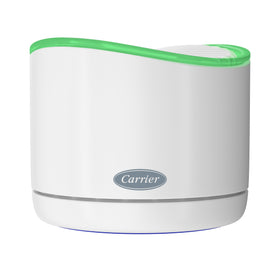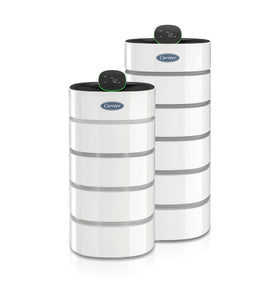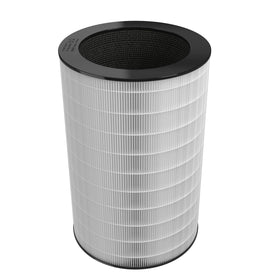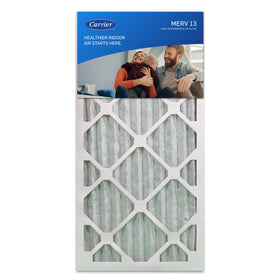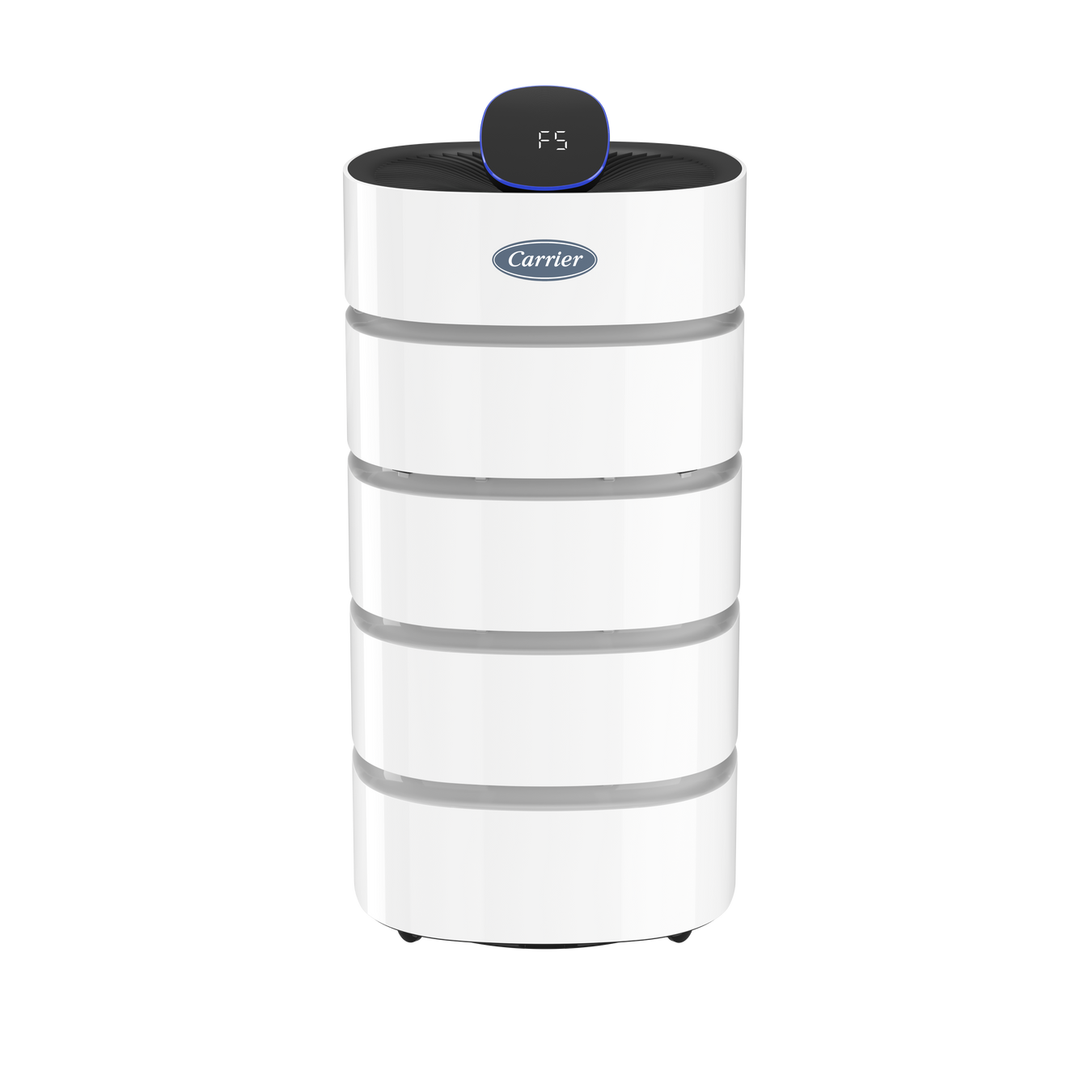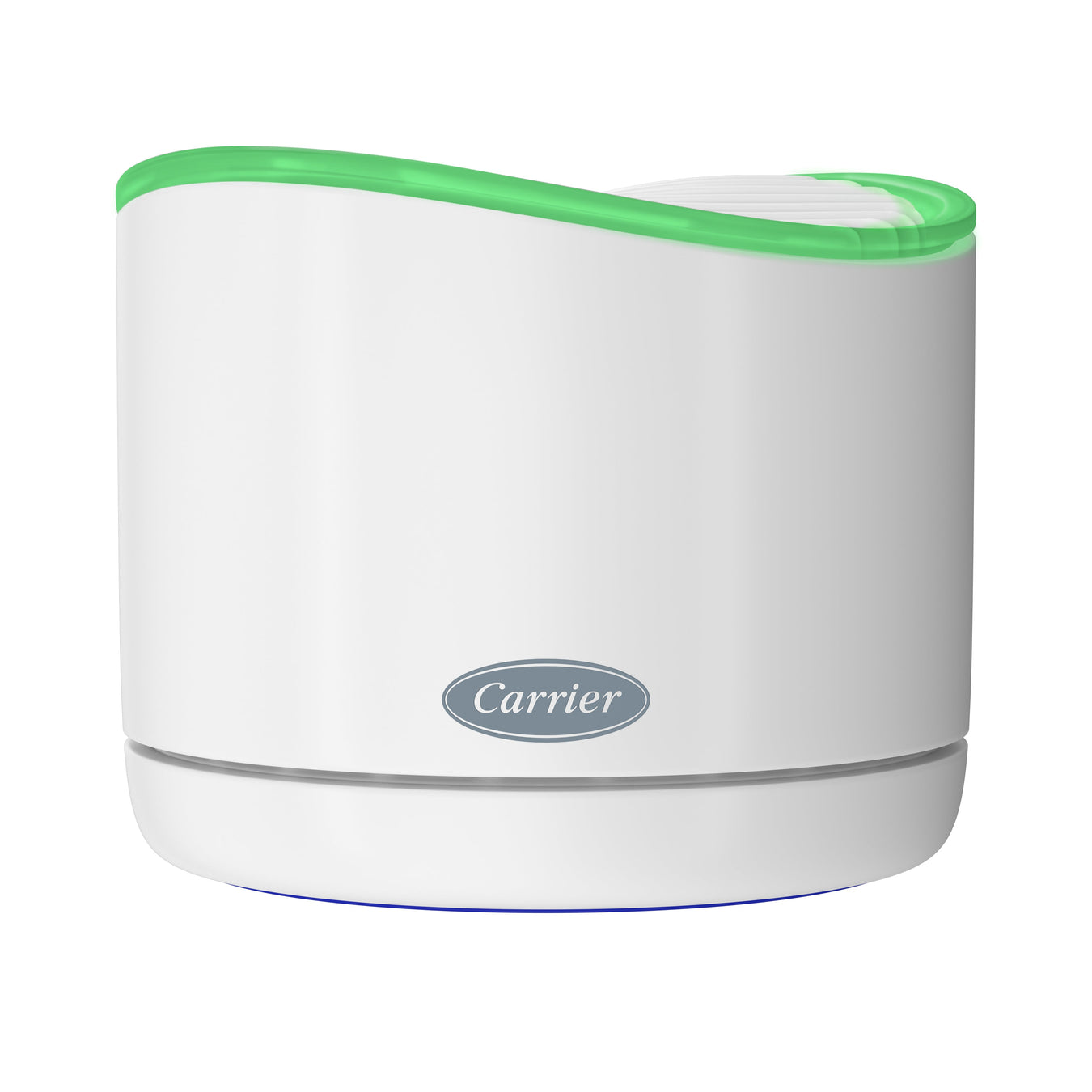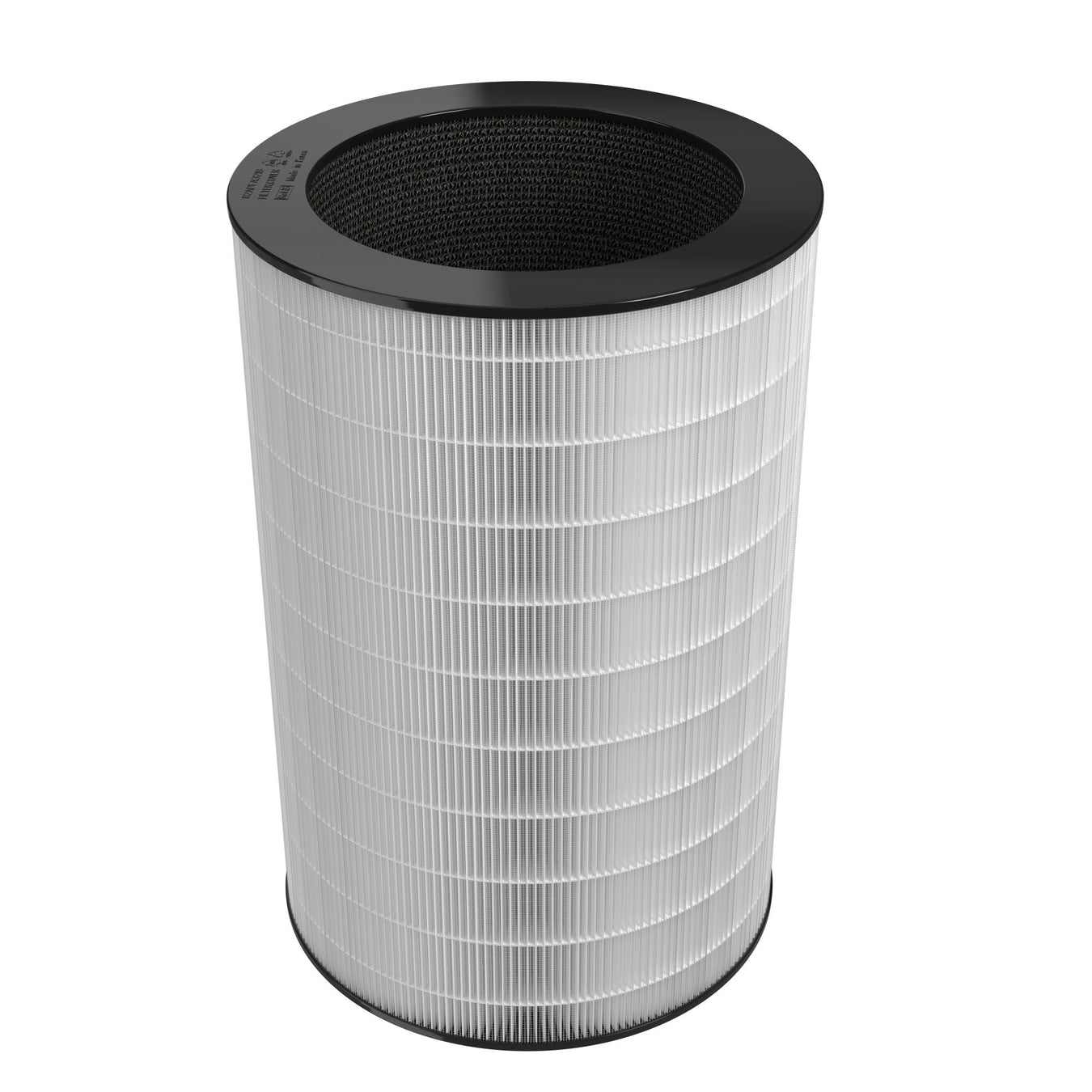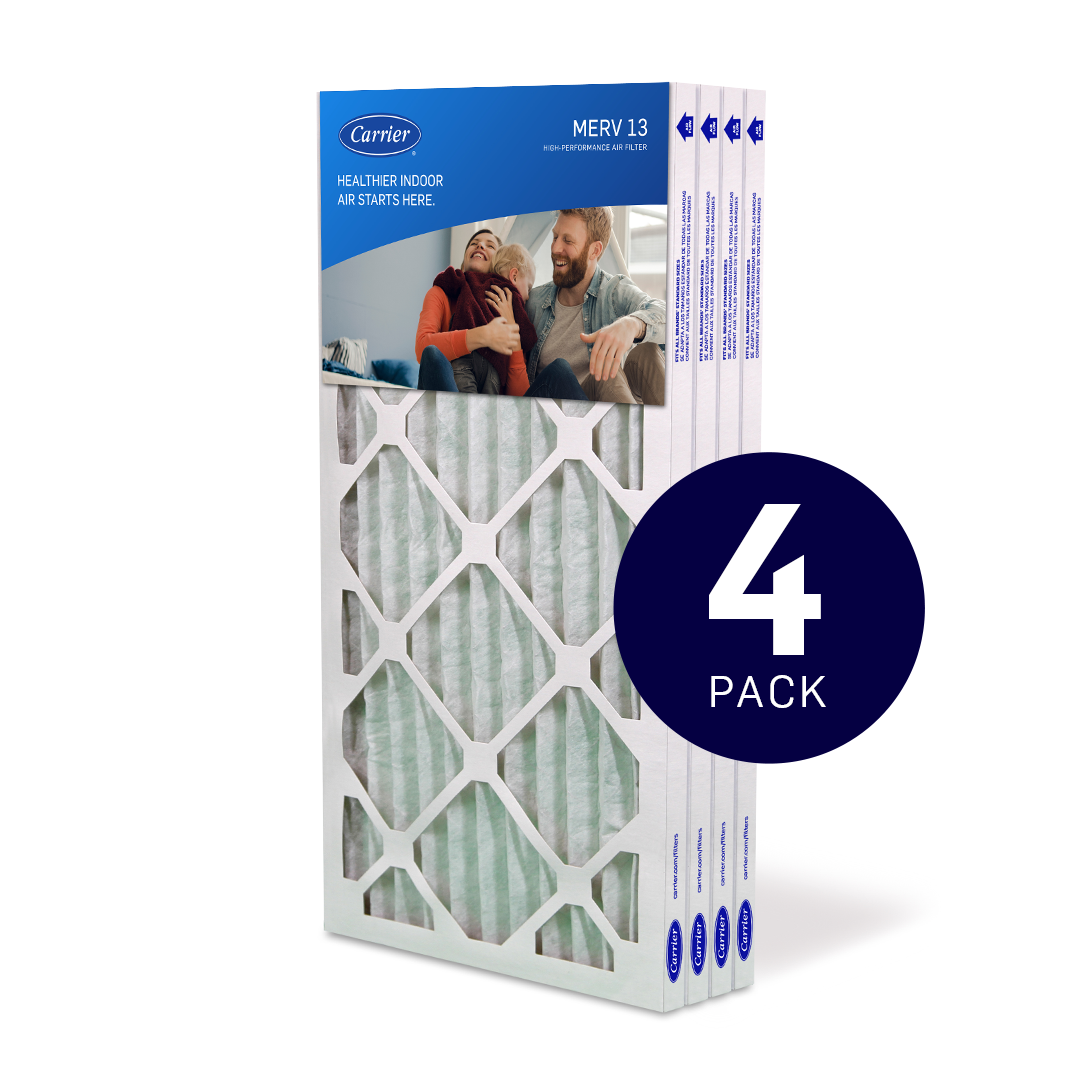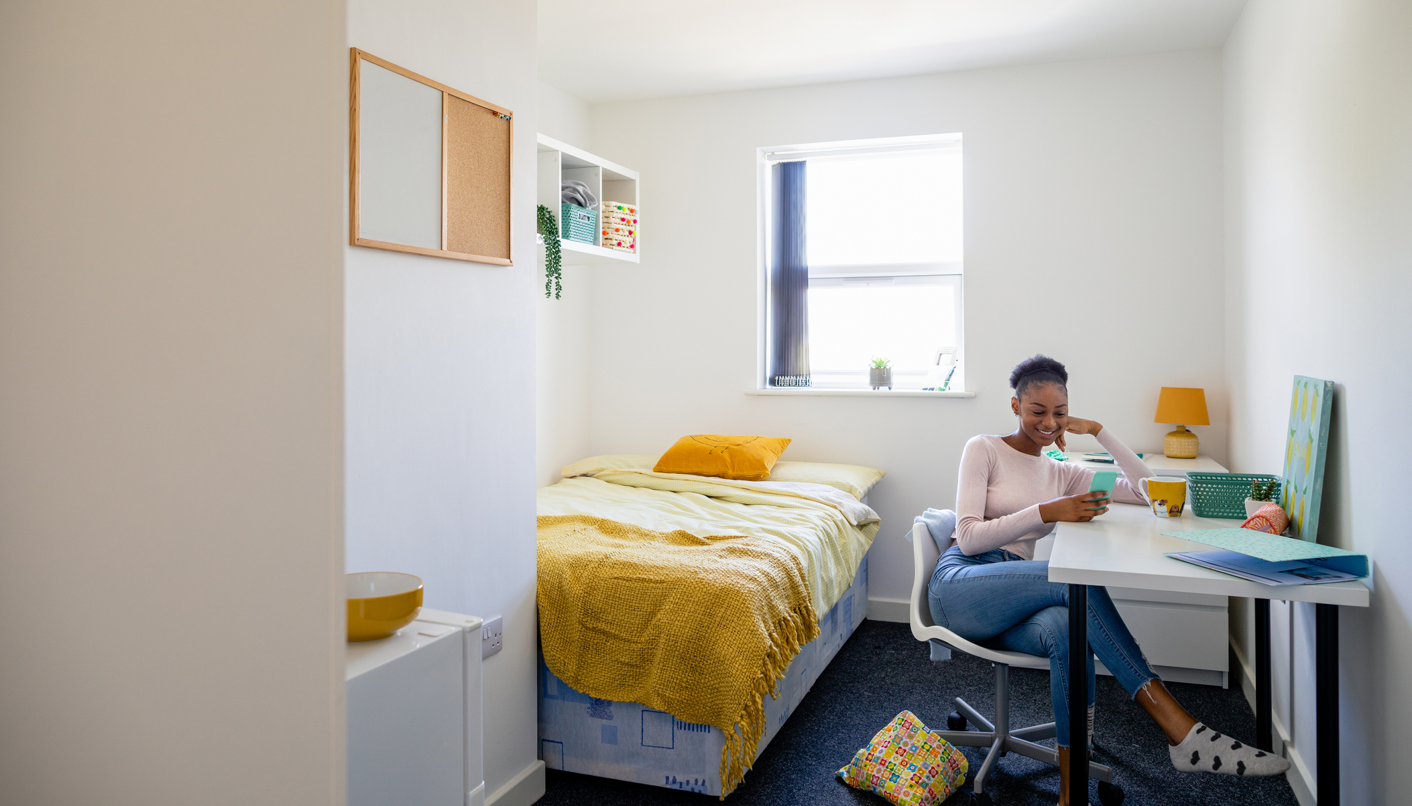
Air Purifiers for Dorm Rooms
For college students, dorm life offers a number of advantages – meeting people and developing new friendships, learning how to live on their own, social opportunities, the convenience of living on campus, and more. At the same time, college dorms can promote poor air quality2, and this could be a reason why so many college-aged individuals and their parents are interested in air purifiers for dorm rooms.
Air purifiers for dorm rooms can be effective solutions for the typical college campus housing unit.3 They are appropriately sized for small spaces, easy to use, easy to maintain, and easy to move at the end of the semester or when changing rooms.
Poor Air Quality in Dorm Rooms
Poor air quality in dorm rooms can be related to several different factors. And while not all dorm rooms are created equally, many fall into the same category – small, tight quarters in sometimes older buildings, some without air conditioning and possibly without adequate ventilation. In these types of rooms, it’s important to find a way to clean the air and help filter airborne particles like dust, allergens, and other pollutants. Here are a few examples:
- Older facilities: Old dormitory buildings often have poor ventilation, and many do not have air conditioning, leading to stuffy, stale air. Stale air is indoor air that hasn’t had enough fresh air circulating through it. At low levels, stale air is uncomfortable, but at higher levels, stale air can become unhealthy. For more on the topic of “what is stale air” and how to resolve it, check out the Carrier at Home website. Please note that air purifiers do not replace cleaning the space and make sure that sources of dust, or other pollutants are being taken care of, but rather work as an ally when proper actions are regularly being taken.
- New location: When students migrate to a different locality or state to attend college, they are suddenly exposed to allergens their bodies might not be used to. Different pollen counts and higher concentrations of dust can trigger flare-ups of allergy symptoms. These types of reactions can be potentially mitigated with air purifiers for allergies.
- Small rooms sizes/multiple occupants: When you combine the relatively small rooms sizes with multiple occupants you increase the potential for poor indoor air quality. Increased humidity, odors, and even volatile organic compounds can all become trapped inside rooms where occupants may be spending a lot of time studying, sleeping or socializing.
Many of the effects of poor indoor air quality can be more annoying than anything – allergy symptoms like itchy and watery eyes, sneezing or coughing; dizziness; headaches and fatigue.4 However, longer term issues are possible with prolonged exposure, including issues like respiratory diseases, heart disease and even cancer.5

Best Air Purifier for Dorm Rooms
There certainly is no shortage of portable, room-sized air purifiers for dorm rooms available. To cut through the clutter, be sure to look for the model that best suits your specific needs. For example, if dorm living has heightened allergy symptoms, make sure to find a true HEPA filter that will offer more effective filtering of airborne allergens as studies have shown that using an air purifier with a HEPA filter in your home can help improve at least one measure or marker of improved health outcome.6
While everybody will have their own preferences and needs, there are several factors to consider when choosing an air purifier for a dorm room:
- Size: Choosing the right air purifier for your dorm room should involve more than just choosing one rated for small rooms. Measure the square footage of the room, then be sure to select a unit that is capable of cleaning the air in a room of that size. Don’t forget to take the ceiling into account if higher than 8 ft.
- Energy consumption/efficiency: Your air purifier will be running a lot, so be sure to consider the energy efficiency of the model you are interested in purchasing. Even better, look for an ENERGY STAR® certified unit that meets the EPA’s stringent ENERGY STAR efficiency requirements.
- HEPA filters: HEPA filters trap 99.97% of airborne pollutants sized 0.3 microns, including dust, pollen, and other pollutants.
- Activated carbon filters: For controlling odors, select an air purifier with an activated carbon filter. Activated carbon filters help minimize airborne odors which can be especially important in a small dorm room.
- CADR rating: CADR, or clean air delivery rate, is a standard measurement of a filter’s ability to remove dust, pollen or smoke from indoor air. A purifier’s clean air delivery rating is defined and certified through the Association of Home Appliance Manufacturers (AHAM). While not all manufacturers participate, CADR ratings by AHAM can help when making comparisons between different air purifier units.
- Air quality monitoring: Some room air purifiers include an air quality monitor that can let you know when the air quality is good... and when it’s not so good. If your purifier offers more than one fan speed, adjusting to a higher speed can help provide more filtration and hopefully improve the quality of the air in the room. Some air purifiers even include an auto mode based on the level of air quality where the air purifier will automatically adjust between 18 fan speeds as needed.
- Sound: Air purifiers aren’t silent – they use fans to draw air into the unit and through their filters. Look for a purifier with multiple fan settings or even a night mode setting. Lower fan speeds often equal less noise, though maximum filtration performance is achieved at the highest speed.
- Easy maintenance: For the most part, an air purifier just does its job without too much fuss. However, they all need maintenance, so choosing one that is easy to maintain is key. And knowing how to clean an air purifier will be helpful as well.
- Costs: Of course, college students are often on a budget. Be sure to weigh the benefits of a more expensive unit versus its cost. An inexpensive unit might be attractive, but if it’s not effective, is it worth the money? On the other hand, a more expensive unit with full HEPA filtration, multiple fan speeds and automatic operation might be the better option. Thankfully, there are plenty of attractive, cost effective and high-performance options out there. Make sure to keep reading the next section to know what features to look for.

With all the information to consider and the number of choices available, it may be natural to ask the question, “do air purifiers work?” The short answer is, they do! According to the EPA, air purifiers can help improve indoor air quality when used as part of a strategy that includes controlling or removing sources of poor indoor air quality and improving ventilation.7
Features to Look For
When researching air purifiers for dorm rooms, be sure to give Carrier smart air purifiers a serious look. They offer three-part filtration that includes a pre filter to trap larger particles, a HEPA air purifier filter, and an activated charcoal filter for odor control. With an 18-speed fan including an auto mode based on the level of air quality, the air purifier works to filter airborne particles It has lower speeds for quieter operation, higher speeds for more air cleaning, and everything in between. With a built-in air quality monitor, Carrier room air purifiers also provide a simple, at-a-glance way to keep informed about the quality of the air in your dorm.
FAQ
Here are some frequently asked questions regarding air purifiers for dorm rooms:
- Do air purifiers work in dorm rooms? A good air purifier is a portable, simple solution for improving the quality of the air in a dorm room. Depending upon the model, air purifiers can help filter dust, pollen, pollutants and odors from the air in a set room as long as your room’s square footage matches the air purifier square footage advertised by the manufacturer.
- How do you fix a stuffy dorm room? The first line of defense is improving ventilation. Open the door and window/windows to help create natural airflow. Add a fan to help move the air even more. Eliminate sources of dust like rugs and extra pillows. And, add an air purifier to the mix.3
- Should I get a humidifier or purifier for my dorm room? To answer this question, you’ll need to examine what issue you are trying to solve in addition to understanding the difference between an air purifier vs humidifier. If the air in your dorm room is too dry, a humidifier will add moisture. If your issue is poor air quality – dusty, dirty air that may include allergens -- then your solution might be air purifier with a high-quality air filter. Be sure to check your school’s policies on what types of equipment can be used in a dorm room before you make a purchase. We recommend avoiding ionizers/ozone generators. Click here to learn more.
- How do I get airflow in my room without a window? To get more airflow in a dorm room without a window, open the door often. Consider adding an air purifier for filtration to provide cleaner air in your space.
- Are air purifiers portable? A room air purifier does not require special installation or connection to ductwork. Because most dorm rooms are not large rooms, an appropriately sized air purifier should be small enough and light enough to be portable. Simply unplug the unit and take it to your next dorm room when it’s time to move.
- https://www.epa.gov/iaq-schools/how-does-indoor-air-quality-impact-student-health-and-academic-performance
- https://housingmatters.urban.org/articles/poor-air-quality-campus-housing-hurting-students
- https://ehs.wisc.edu/wp-content/uploads/sites/1408/2021/09/Dorm-Room-Indoor-Air-Quality.pdf
- https://www.epa.gov/indoor-air-quality-iaq/introduction-indoor-air-quality
- Introduction to Indoor Air Quality | US EPA
- https://www.epa.gov/sites/default/files/2018-07/documents/residential_air_cleaners_-_a_technical_summary_3rd_edition.pdf
- https://www.epa.gov/indoor-air-quality-iaq/air-cleaners-and-air-filters-home

